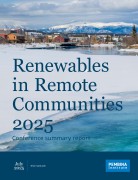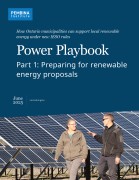Low-impact renewable energy (LIRE), including wind, sun, biomass and moving water, is a stable and predictable source of energy that can meet much of Canada's energy needs. Worldwide, the LIRE industry has an annual turnover about US$7 billion, and is expected to grow to US$82 billion by 2010. While Canada currently lags behind most industrialized nations, leadership from federal and some provincial governments has worked to advance LIRE research, development, and commercialization programs in Canada.
One of the most significant barriers to growth of the LIRE industry in Canada is lack of pricing for environmental and human health "externalities". Well-established markets for GHG emissions, clean air and water are needed to create price signals that support LIRE development. Several policy options, drawn from international initiatives, are also provided in the report.






